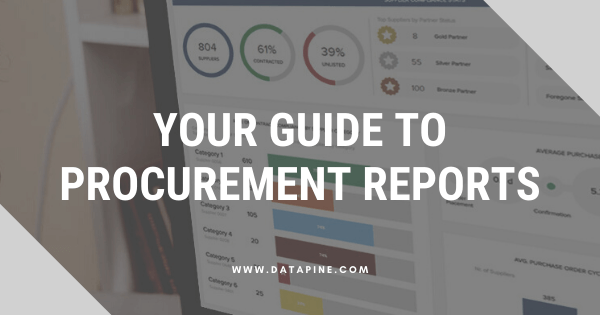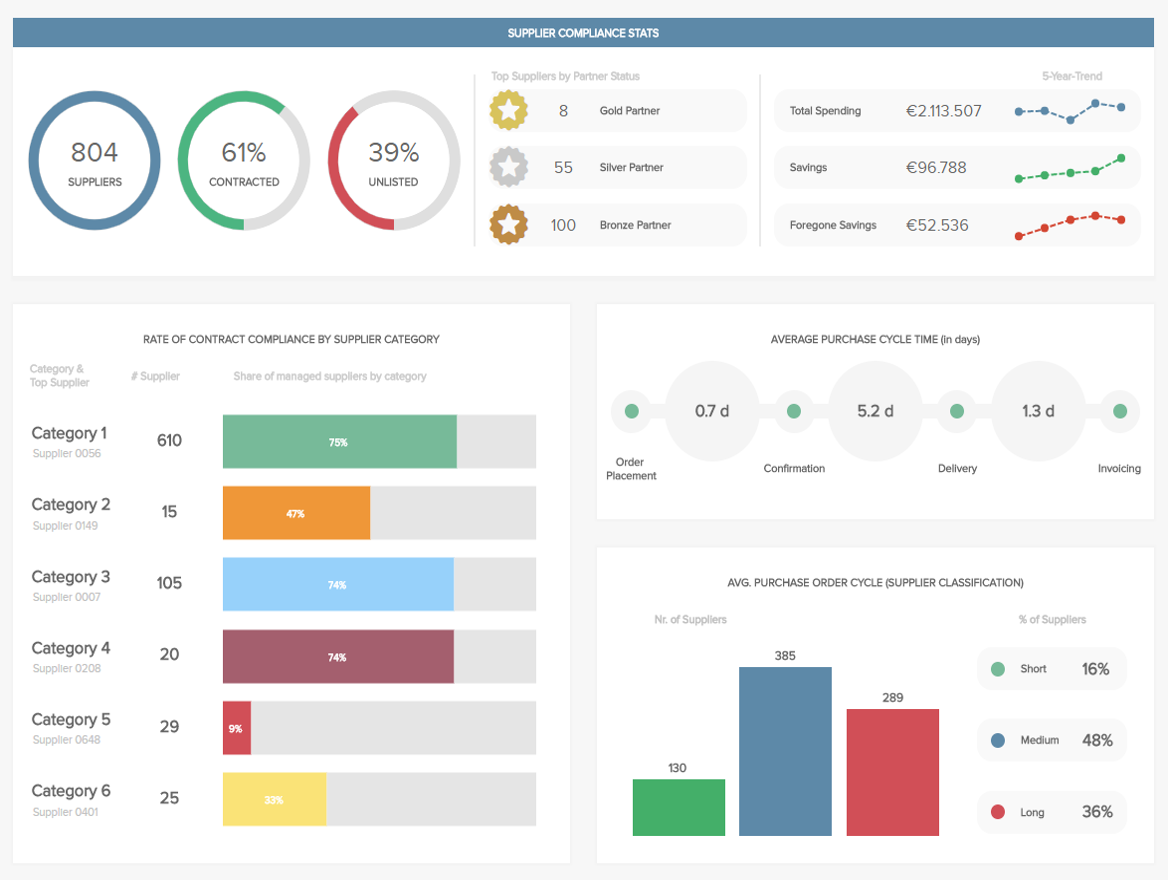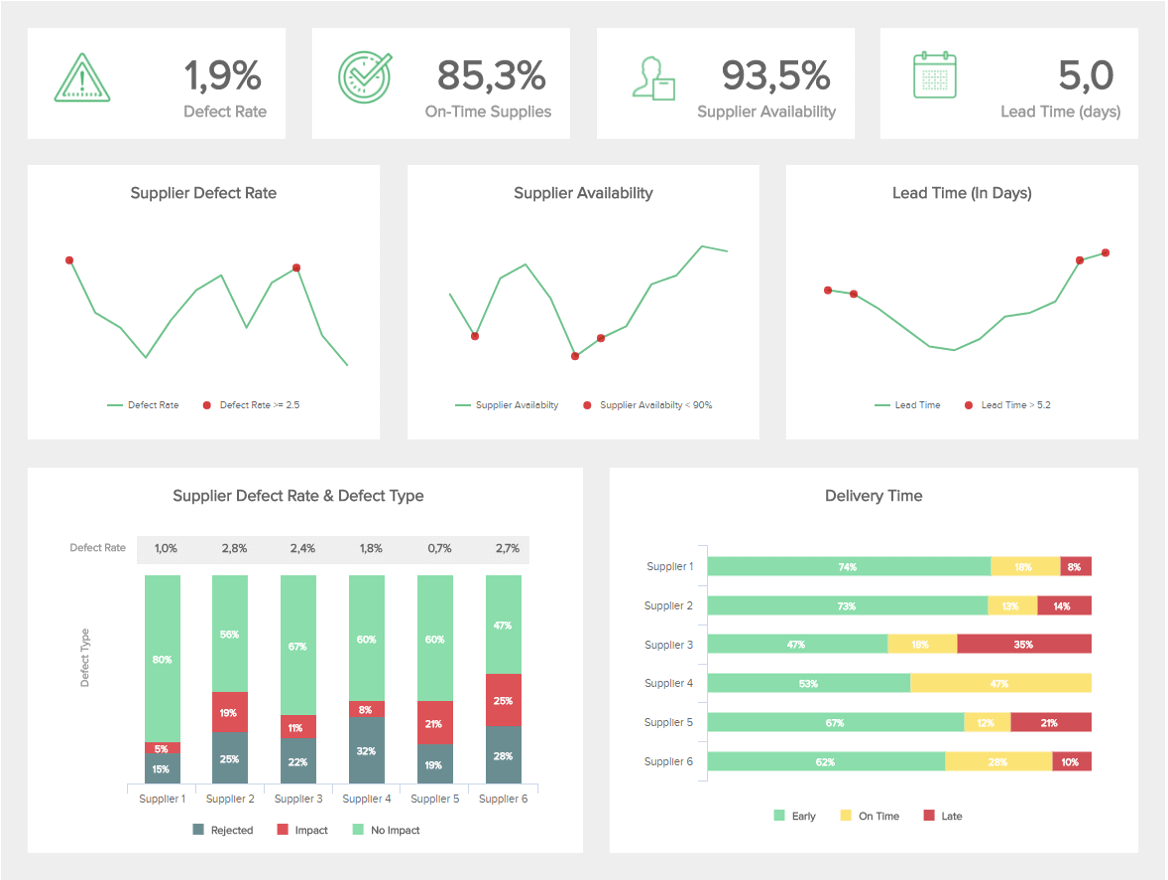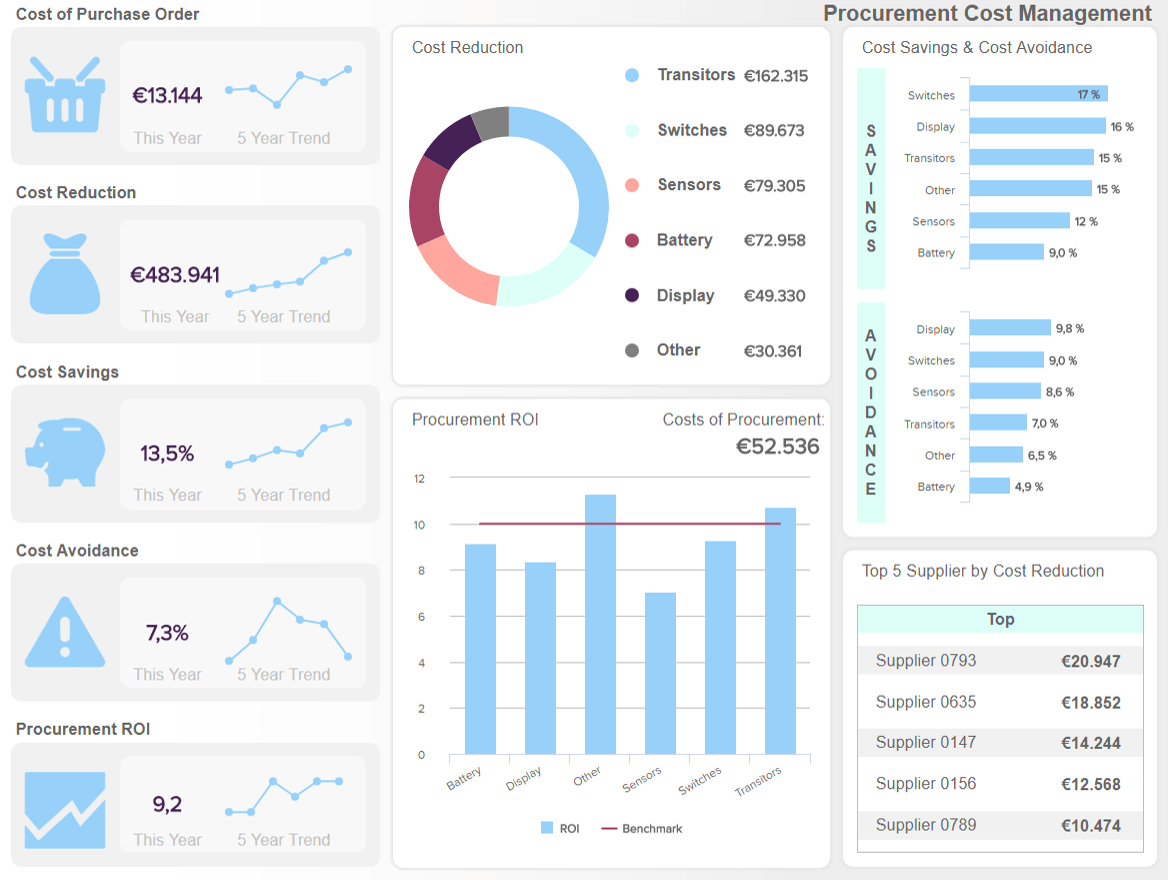
It doesn’t matter how innovative your brand is or how groundbreaking your business model might be; if your business is ridden with glaring inefficiencies, your potential for growth is eventually going to get stunted.
In fact, an IDC study showed that over 80% of business leaders surveyed from sales, HR, procurement, and other departments agreed that issues arise because companies are equipped with different internal systems and applications that don’t ‘talk’ to one other. 43% of the surveyed staff also said they often have to copy and paste or rekey in information, thereby wasting time and hindering productivity.
Now, regardless of the sector or industry, the procurement of goods and services in a timely and efficient manner is one of the primary drivers of success. If your procurement process costs you valuable time and incurs unnecessary costs, you may end up falling behind your competitors.
Fortunately, we live in a digital age rife with statistics, data, and insights that give us the power to spot potential issues and inefficiencies within the business. Thanks to the right KPI software, it is much easier to identify trends and setting goals that will ultimately increase productivity, drive growth, and boost profits. And procurement reporting is no exception to this.
In this article, we will explain the basic definition of procurement reports, talk about the benefits and challenges that occur when dealing with procurement data to provide you with innovative ideas on spotting inefficiencies. We will continue with tips on how to do a procurement analysis, and wrap up with real-life examples that you can implement into your own business strategies. Without further ado, let’s get started.
Download our guide to find out about the power of procurement reports!
What Are Procurement Reports?
A procurement report allows an organization to demonstrate how its procurement activities deliver value for money, contribute to the realization of its broader goals and objectives, and provide a panoramic snapshot of the effectiveness of its procurement strategy.
Through a host of comprehensive metrics, insightful data gleaned by tracking the right procurement KPI, reporting gives a business the power to enhance its procurement strategy by preventing minor inefficiencies from becoming significant issues and providing a clear insight into the practices or supplier relationships that work, as well as those that don’t.
Throughout years these reports have been created and managed through traditional means of data management such as spreadsheets or static presentations but companies need to hurl these stone-age practices and start utilizing modern online reporting software that will transform your results, and ultimately, increase profits. Let us see the importance of procurement reports in more detail, alongside with most common challenges.
“The price of light is less than the cost of darkness.” – Arthur C. Nielsen, Market Researcher & – Founder of ACNielsen
Why Are Procurement Reports Important?
In a time when digital data reigns supreme, offering us more insight into our commercial activity than ever before, businesses that conduct their procurement activities blindly will pay the price.
Common procurement reports that drill down to significant areas of the procurement process have the power to help you make the kind of improvement that can make or break your business in today’s cutthroat digital climate. Reporting is the crystal ball that offers a glimpse into the past, present, and future of a business’s procurement activities, helping it move forward in the best and most sustainable way possible.
There are a host of benefits to procurement reporting. By monitoring and analyzing key elements of your procurement activities, it is possible to:
a) Improve the accuracy of the financial forecasting
You can easily increase financial efficiencies and save costs by identifying potential procurement problem areas in your business. If you track your costs on a regular basis, your purchasing report will be filled with crucial financial analytics insights that will help you streamline your supplier management processes, identify if you need to train your staff on how to reduce costs, and ensure continuous monitoring to ensure your finances are being well managed and efficient.
b) Minimize errors throughout the supplier chain
By monitoring your dependency on suppliers over a set time frame and identifying which one provides you with the right product at the right time, you can easily analyze the suppliers’ performance and conduct comparisons throughout your business. With the help of a dashboard designer, you can simply drag-and-drop your values and create interactive visualizations that will point out errors immediately. That way you will be able to significantly reduce errors, and increase your productivity levels.
c) Increase the efficiency of crucial KPIs
With so many areas to consider, deciding which KPIs to focus on while defining metric measurement periods can prove to be a challenge at the initial stages. Scaling the value of data and analytics across all areas of your procurement process might prove difficult in the beginning, but by ensuring that all key members of your procurement team have access to your reporting dashboards and understand how to leverage the data to their advantage, the steps to take towards your procurement strategy will swiftly become clear. For example, you might want to track crucial order cycle times and order fulfillment speeds to be able to handle urgent orders and take into account suppliers that can fulfill your requirements quickly and without additional complexities.
d) Understand which supplier relationships are working
If you create regular purchasing reports, you can easily identify which suppliers are not only available during your urgent times, but also classify them based on a number of other criteria such as special discounts, reaction time, and other compliance parameters of your contract. That way, you can introduce categories for each supplier and identify which ones keep a good relationship with your company on the one hand, and on the other, which need termination or replacement. We will see this in our procurement report sample below in the article.
e) Take accurate measurements
Procurement reports provide a wealth of opportunity to improve your ROI based on your various procurement actions and activities. Both short-term and long-term procurement goals of your business will be fulfilled by providing a tangible glance at every vital aspect of the order and fulfillment spectrum. That way you can increase your ROI and ensure sustainable business development.
f) Reduce and avoid unnecessary procurement costs to the business
With procurement being such a critical component of any business, providing the oil that greases the organizational cogs and keeps everything flowing along with monitoring and analyzing all aspects of the process is essential. From costs and supplier delivery to compliance rates and order cycle time, there is a wealth of procurement-centric insights to explore.
As the business evolves and grows, scaling your common procurement reports to reflect the new demands of the business might also prove challenging. However, by making a collaborative approach and following some dashboard best practices to remain in line with your key business goals and objectives, you’ll be able to avoid data fragmentation and continue to benefit from the procurement insights that are the most valuable.
In the next part of this article, we will focus on the how-to process in the procurement analysis to see the best practices and tips you can utilize in your own procurement operation.
Download our guide to find out about the power of procurement reports!
How Do You Do Procurement Analysis?
Making sure that you’re properly using your hard-earned money is crucial to become and stay successful in our cutthroat business environment. That’s why regular analysis of your processes and utilizing various types of procurement reports will ensure you’re making the best use of your resources. Let’s take a closer look at the most useful tips to conduct your analysis and stay profitable in the long run.

1. Identify and gather all your data sources
No matter how big or small your company is, you need to gather and consolidate all your data sources – from all the departments and business units, including accounts payable, E-Systems or various formats, flat files, databases, etc. Pulling the data out of many different sources will create more confusion than sustainable growth. You need to include a common interface where your data will be stored and ready to extract or manipulate whenever a manager or team member needs to create a report. Maybe it sounds like this process would take a while, but using a dashboard builder will ensure your information becomes visualized with just a few clicks without the need to spend countless hours or days into the process.
2. Clean your data
After you have identified and gathered all your data, it is time to clean, categorize and organize it. Professional tools can help you in this step so you don’t have to manually calculate or search through endless files the right information. Remember to standardize your analysis based on the information you’re looking for. You also need to harmonize all your transactions to be able to increase visibility on all your spending processes and ensure that your procurement strategies will increase productivity. This might sound scary and daunting, but luckily, we live in a digital arena where you can utilize modern machine learning features and let the software do the hard work.
3. Group your suppliers
To ensure maximum performance, it is crucial to group and connect your suppliers so that they have a clear link between each other. For example, if one of your suppliers is Coca-Cola Co., make sure you group all its companies together, such as Sprite, Fanta or Coca-Cola zero, as they belong to the same supplier. That way you will minimize any potential error during your purchasing processes and obtain the most correct information for the management of your suppliers.
4. Manage your spend data
You need to analyze and optimize your spend data from internal and external sources to be able to drive your company forward, decrease costs and improve the relationship with your suppliers, for example. This is one of the key parts of your procurement analysis since you can easily identify opportunities and improve the visibility of your spending processes. In this step, you can utilize the 5Ws: Who? What? Where? When? Why? By adding the how, you can assess your expenditures and see where to allocate your resources better. Some of the questions may include:
- Who are we buying from?
- What are we buying?
- When (how often) do we buy?
- Where are the products being delivered?
- How can we compare the data with previous periods?
If you add spend forecasting that will ensure you have a clear understanding of the potential impact on profits of the procurement processes, you can obtain a birds-eye view on your whole lifecycle and decrease your costs.
5. Analyze your findings
Whether you need to monitor and analyze specific supply chain metrics or make sure that you have negotiated the best possible contract deals, you need to conduct regular analysis of your processes. That way you can reduce the number of suppliers per category and negotiate better contract rates which will, in turn, reduce your costs significantly. Remember that costs savings can be only accomplished if your calculations and previous steps such as cleaning your data are done correctly. That way you can develop purchasing reports to management or send it to your colleague in a matter of minutes. Of course, we suggest using modern technology since time is money, and you need software to collect, store, analyze and monitor your data based on powerful features such as machine learning and smart data alerts.
6. Last, but not least: repeat & learn
We can conclude this section with a simple notion: repeat. Whether you need to upscale your financial reporting procedures to create a more efficient procurement strategy or clean your data to know whether a supplier is worth your business efforts, you need to continuously evaluate your strategies and performance.
As mentioned, modern technology can help you in the process and update your data automatically, send your reports to stakeholders, colleagues or management by setting automated schedules, and you won’t need to use spreadsheets or manual calculations ever again. A business intelligence dashboard can simplify your processes and help you create the best possible procurement management report, daily operational or just alarm you if a business anomaly occurs.
To be able to see how this is done in action, we have prepared some of the most important procurement reports samples that you can take a closer look at and implement in your own strategies.
Download our guide to find out about the power of procurement reports!
Top Procurement Report Examples
Now that we’ve explored the benefits of procurement reporting and showed some tips in conducting procurement analysis, we’re going to look at the 3 primary dashboards associated with the order, supplier, and fulfillment-based activities of a business.
1. Procurement KPIs Report
Whether your business deals with physical goods or digital services, procurement is of equal importance. This is because procurement links the needs of an organization with its suppliers or contractors and as such, plays an integral role in the competitiveness of any business.
**click to enlarge**
That said, this procurement report template offers a comprehensive overview of the various metrics that are vital to the success of the procurement department. This intuitive and interactive dashboard helps in summarizing a procurement department’s main activities as well as its relationship with the company’s suppliers. In turn, the procurement KPI dashboard not only helps with the smooth and successful management of the department but also assists in building brand awareness.
This dashboard will enable you to pinpoint and track metrics that are found in most procurement departments, alongside details and the possibility to drill down, interact and filter each part of the visualization. Moreover, you can easily export or schedule automated reports each week or month, for example, to have this dashboard delivered into your inbox with fresh and updated data.
Main KPIs:
- Compliance rate: In procurement, compliance represents the basic agreements set by a company and its supplier. By breaking down each supplier into definitive categories, this particular KPI provides a clear-cut snapshot of how compliant your various partners are and if any changes should be necessary.
- The number of suppliers: This KPI tracks the level of dependency you have towards your suppliers over a particular time frame. Relying on too few suppliers and failing to diversify your sources can cultivate a significant risk of dependency. On the contrary, too many suppliers can reduce the possibility of valuable discounts. This priceless metric will help you decide on the optimum number of suppliers for your business.
- Purchase order cycle time: The procurement order cycle time is a metric that measures the end-to-end ordering process, from the time a purchase order is raised to the order approval, receipt, invoice, and payment. By reducing this time and ironing out any inefficiency, you will not only improve your productivity rate but also help to enhance your brand’s reputation.
2. Supplier Delivery Report
This procurement report template is based on a supplier’s ability to provide your business with the right products and services at the right time.
**click to enlarge**
With a mix of metrics and KPIs based on elements such as defect rates and delivery times, all geared towards offering valuable information on the performance of single suppliers as well as overall supplier performance, this is one procurement report that your business definitely needs. Suppliers are one of the crucial parts of the procurement strategy, and you have to measure each part of your relationship and contract performance such as the defect rate, suppliers’ availability, load time, etc. Let’s take a closer look at these invaluable KPIs.
Main KPIs:
- Supplier availability: This supplier-facing KPI measures your suppliers’ capacity and ability to respond to urgent demand consistently. In an age where consumer purchasing habits are constantly changing in response to the growing number of buying channels, it’s never been more critical to ensure that your suppliers are available to cope with fluctuating volumes of orders and requests. And the supplier availability will help you do just that.
- Supplier defect rate: In our fast-paced digital age, there’s little time for error, and consistent defects can prove to be detrimental to the reputation of a brand. This invaluable procurement KPI measures the quality of your individual suppliers concerning quality and service and product and helps you nip potential issues in the bud before they prove harmful to yourself, your partners, and your customers.
- Lead time: The lead time assists in quantifying the total time it takes to fulfill an order. The concept of this insight is to reduce the lead time as much as you possibly can while maintaining an exceptional level of quality. The data pulled from this metric will steer you on the right path.
3. Procurement Costs Report
The final of these 3 procurement report examples drills down to the costs and purchases associated with your various procurement activities.
**click to enlarge**
To successfully optimize these costs, anticipate the needs of the various business units across the organization, and ultimately save valuable time, it’s vital to oversee the entire purchasing area in one central place. This procurement report offers a panoramic snapshot of all valuable cost-based information. As mentioned, one of the main goals of a successful procurement operation is the ability to effectively manage costs. If you obtain a high-quality level of your cost management processes with tracking KPIs such as cost reduction, avoidance, and ROI, you can reap endless rewards. Let’s see these main KPIs in more detail.
Main KPIs:
- Cost of purchase order: This metric helps to monitor and control the internal costs incurred by every purchase the business makes, thereby theoretically representing the average cost of processing an order, from purchase creation to invoice closure. These costs come with an incredible level of variation, so it’s important to look at the data carefully and decide on the average cost of a purchase order based on the length of time it takes.
- Procurement cost reduction: One of the most central components of the Procurement cost report, this KPI helps to streamline tangible monetary savings across all procurement activities and processes, boosting an organization’s economic efficiency in a significant way.
- Procurement cost avoidance: By offering a view of your various suppliers and their activities in association with your business, you’ll be able to understand the areas of inefficiency that are incurring the business unnecessary costs and develop a strategy to avoid them in the future. These are what are referred to as ‘soft savings’ because they don’t go directly to the bottom line. Despite this, these savings are nonetheless invaluable.
- Procurement ROI: The procurement ROI helps to determine the profitability of investments made within your procurement department. To calculate your Procurement ROI, you must divide the annual cost savings by the internal yearly cost of procurement, and express it as a ratio. Doing so will help you gain maximum value from your investments, and by measuring these metrics along with other key indicators, you will see significant improvements in a relatively small space of time.
Download our guide to find out about the power of procurement reports!
Procurement reporting is vital to the growth and development of your business and by using this wealth of insights to your advantage, you will no doubt enjoy a sustainable level of commercial success you undoubtedly deserve. With the help of an effective procurement dashboard, you can harness the power of your data and make the best out of it.
To find out more about visualizing your procurement analytics and how we can help your organization, you can connect with us or directly try out our 14-day free trial!
The post Your Definitive Guide To Modern & Professional Procurement Reports appeared first on BI Blog | Data Visualization & Analytics Blog | datapine.


